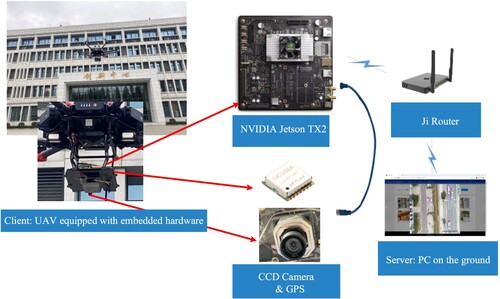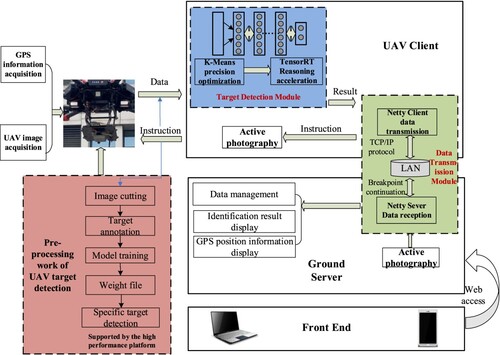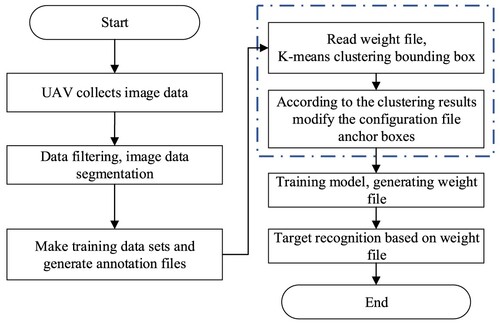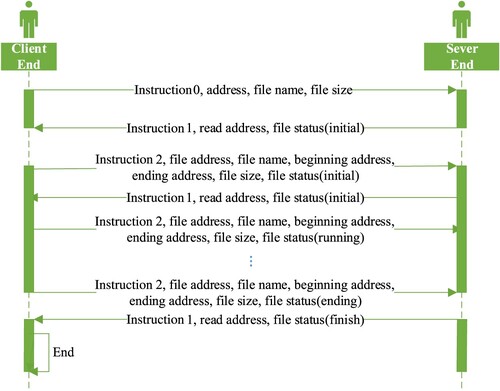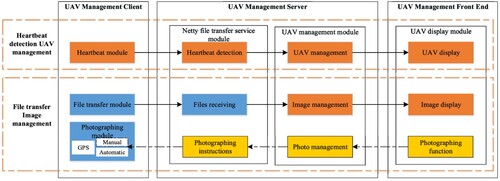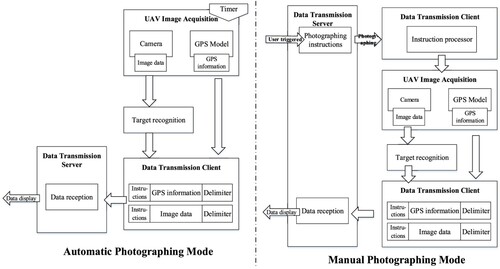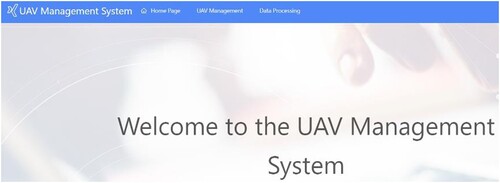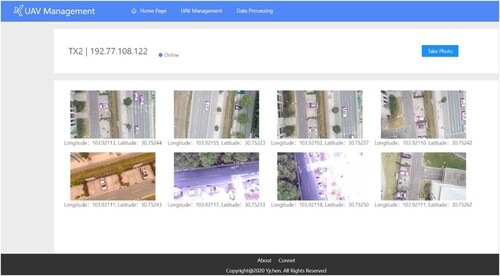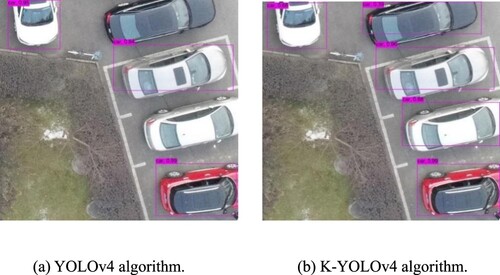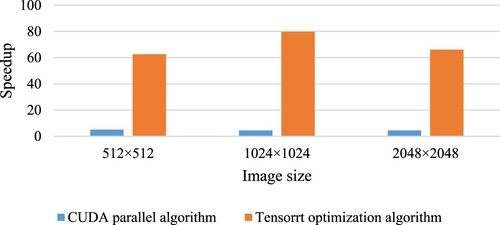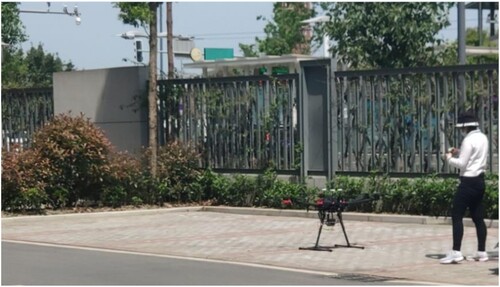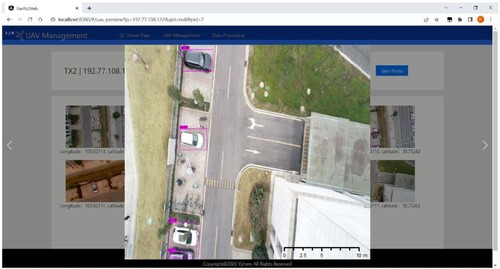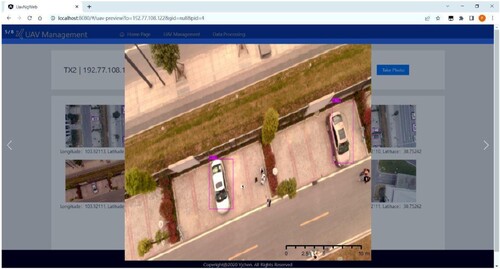Figures & data
Table 1. Comparison of performance between TX2 and an ordinary PC.
Table 2. Comparison of times taken by the original YOLOv4 algorithm on an ordinary PC and the TX2.
Table 3. Partial pseudocode of the UAV transmission client.
Table 4. Pseudocode of the photography instructions received by the UAV client.
Table 5. Pseudocode for the implementation of the GPS module.
Table 6. Pseudocode of the implementation of the front-end page.
Figure 14. Changes in the loss value of the K-YOLOv4 algorithm with increasing number of iterations.
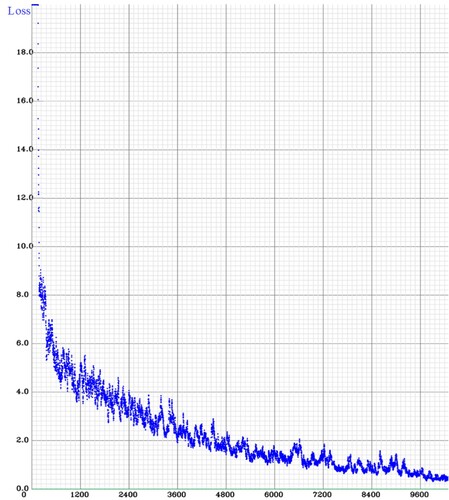
Table 7. Performance of K-YOLOv4 in comparison with other algorithms on the same dataset.
Table 8. Comparison between K-YOLOv4 and the other algorithms on same dataset.
Table 9. Comparison of CUDA acceleration times between the YOLOv4 and the K-YOLOv4 algorithms.
Table 10. Comparison of times consumed by the K-YOLOv4 algorithm before and after optimization.
Table 11. Comparison of the precision and speed of the optimized proposed method with K-YOLOv4, YOLOv4-Tiny, and YOLOv4-MobileNetV3.
Table 12. Software configuration of the test environment.
Figure 20. Detection of moving vehicle by the UAV based on automatic photography at a height of 60 m.
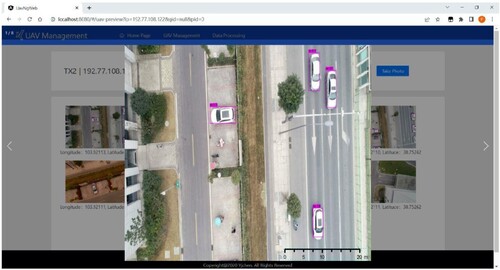
Data availability statement
Data are openly available in a public repository that does not issue DOIs, the website is: https://github.com/MatlabChen/UAV-RTDS.

